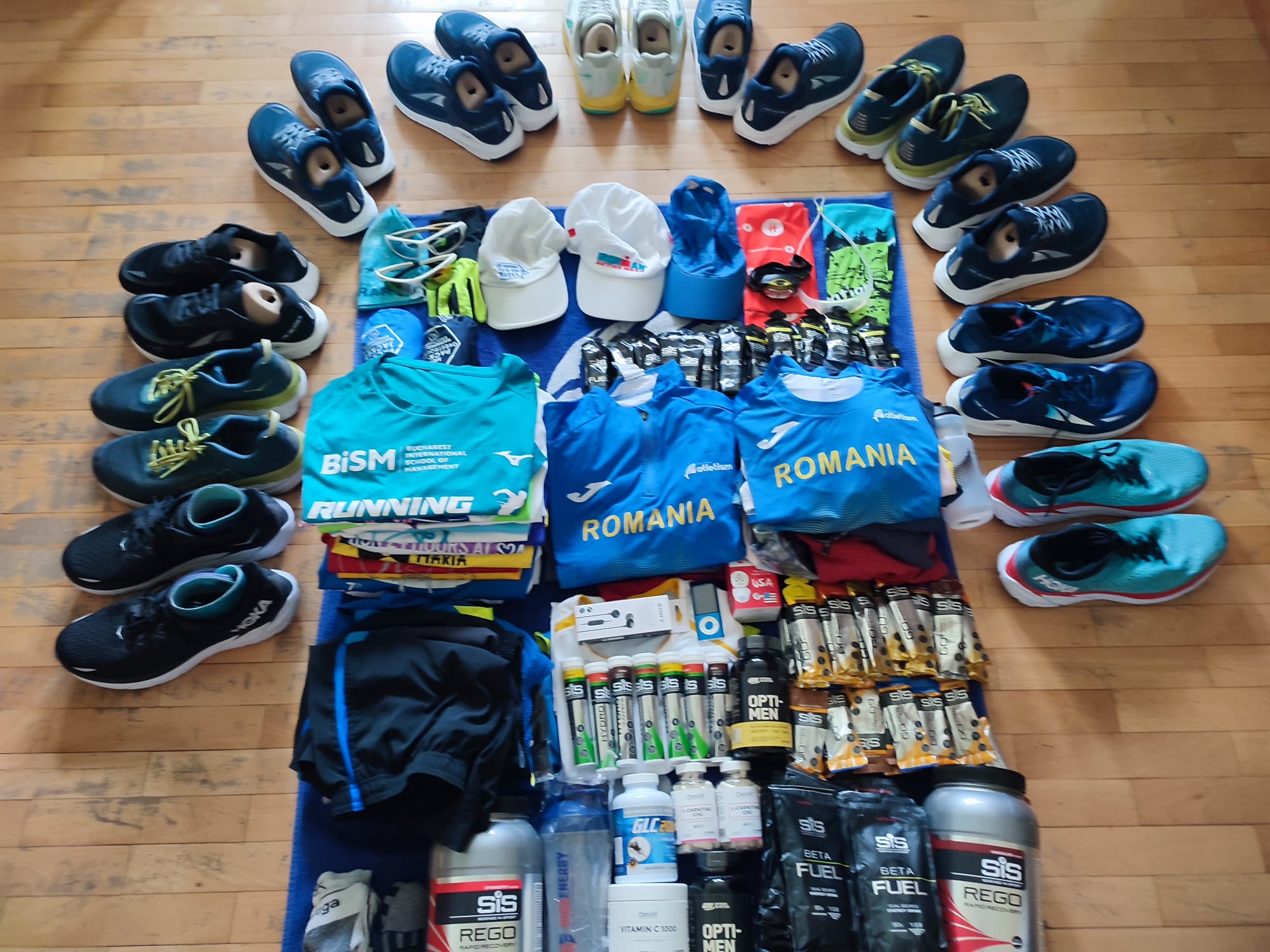Eight business adaptation solutions inspired by the future (that is faster than you think)

Eight business adaptation solutions inspired by the future (that is faster than you think)

One month before we were thunderstruck by the new pandemic my best friend had been on a trip in New York. We usually buy small gifts to one another when travelling, mainly pieces of clothes or jewelry. This time it was a newly launched book that she brought back and it was one of my all time favourites.
The Future is Faster Than You Think was released in January 2020 and was co-authored by Peter H. Diamandis (the founder and executive chairman of XPRIZE and executive founder of Singularity University, receving his MD at Harvard Medical School and his degree in molecular genetics at MIT and who was named “the world’s 50 greatest leaders” by Furtune magazine in 2014) and Steven Kotler (award-winning journalist, two times nominated for Pulitzer prizes). I love the science-story combination and I am a huge fan of imagining the future.
This book is about how converging technologies will transform businesses, industries and our lives. Exponentially accelerating technologies - any technology that doubles in power while dropping in price - are beginning to converge with other independent waves of exponentially accelerating technology. These convergent exponentials wash away products, services and markets and all structures supporting them. You may be protesting against them, but they will come anyway. In 2023 the average thousand - dollar laptop will have the same computing power as a human brain. In 2048 it will have the power of all the human brains on Earth. Once a technology becomes digital, it begins accelerating exponentially.
Same authors introduced in their previous book the growth cycle of exponential technologies or how new technology evolves from digitalization to accesibility/democratization. These stages are:
a. digitalization
b. deception (early progress is slow and the hype is big, so the new technologies spend a long time failing to live up to the hype)
c. disruption (when they really start to impact the world - ex 3-D printing, threating an entire $10 trillion manufacturing sector)
d. demonetization (decresing the cost of a new technology)
e. dematerialization (new technologies wash away products and industries - e.g. cameras, stereos, video game consoles, GPS systems, matchmaking as we knew it)
f. democratization (scaling up, becoming accesible to large grups - cell phones)
There are 10 technologies currently on exponential growth curves:
- Quantum computing (in classical computing, a “bit” is either a zero or one, a “qubit” is a quantum bit who, unlike the binary bits, utilize “superposition”, so they can be in multiple states at one). You don’t get it? Do not worry, me neither and I am a graduate of computer-science high school. But we should become more technical if we want to enjoy a good life in the future…
- Artificial intelligence (the real power of AI lies in its ability to find hidden connections between obscure bits of informations, connections that no human would ever notice; In 2018, an AI ran for mayor of a province in Japan and though it did not win, it was much closer than expected plus I am positive it would have been a better mayor than many humans we currently have in Romania, Bucharest included)
- Networks (means of transportation or how goods, services, information and innovattion are moving; Oldest networks date from Stone Age when first roads appeared, but the big change came on May 24, 1844, when Samuel Morse sent four words down a wire: “What hath God wrought?”. Thirty two years later, Alexander Graham Bell send his nine-word demand on the first telephone call: Mr. Watson, come here. I want to see you.” In 2019-2020 we have the 5G network that is going to deliver speeds a hundred times faster at near-zero prices to those having brains and conspiracy fever to all who don’t)
- Robotics (robots are entering almost all aspects of our lives: from the operating rooms to the crops that need to be harvested or trees that need to be planted fast to avoid severe deforestation or to construction where a robo-mason can lay thousand bricks an hour. A robot delivering pizza is common for Domino’s Pizza)
- Virtual reality (VR) - VR causes more behaviour changes, more engagement and influence versus traditional media and this was proved in several experiments, like the one to be in the shoes of an elderly, homeless, African-American woman living on the streets of Baltimore.
- Augmented reality (AR) - It is a great educational instrument, making it accesible to stand next to Cleopatra’s thomb and learn by seeing.
- 3-D Printing - The first original 3-D printers came in the eighties, but they were slow, big, easy to break and only printed plastic. Now you can print in hundreds of different materials, in full color - from jet engines to apartments, from prosthetic limbs to food. The best example comes from Brett Hagler, who traveled to Haiti after the devastating earthquake in 2010. He formed a nonprofit called New Story, raised research capital, created a solar-powered 3-D printer and started printing 400 to 800 square-foot homes in 48 hours at the cost of $6,000 to $10,000. In 2019, in Mexico, New Story began the construction of the world’s first 3-D printed community.
- Blockchain - Digital currencies were first proposed in 1983, but due to their “double-spending problem”, were not actually live before bitcoin appeared in 2008. The real revolution was not the bitcoin itself, but the technology that enabled its appearance. Blockchain is a distributed, mutable, permissible and transparent digital ledger. By cutting the middleman in the equation, blockchain is doing to banks what internet was doing to the traditional media.
- Material Science and Nanotechnology - Materials science is the branch devoted to the discovery and development of new materials. The lithium-ion battery is an example. In robotics, new materials are helping to create artifical muscles needed for humanoid, soft robots.Perovskite, a light-sensitive crystal can improve 4 times the conversion efficiency of the average solar panel. Nanotechnology is the outer edge of materials science, the point where you can minimize at large scales - by example, million times smaller than an ant.
- Biotechnology is about using biology as technology. It turns our genes, proteins and cells into tools for manipulating life. A cheaper, faster genomic sequencing would lead to health care breakthroughs, building more on prevention with real time data than curing. CRISPR-Cas9 is the leading weapon in the fight against genetic diseases. This is about an engineering tool that allows precise targeting of gene locations and rewriting that DNA.
How would this abstract information be made more practical in the day-to-day lives of a post quarantine, shrinking economy, when you, who are reading this piece - thank you for your time - deal with declining sales, business cancellation, increased costs, jobs cutting, diminished income, etc? Do I sound unrealitistic? My dear reader, I am always inspired by future, but always trying to bring it close to the current grounds, where not many are lucky to use AI, VR, blockchain or robotics.
You can find 8 ideas that are inspired by this book and its momentum - cause I read it during quarantine and tried to imagine its validity in the next future.
- Digital customer segmentation. The senior age group (be it 65+ or 70+) was protected during the emergency state as being the most vulnerable against the virus. Consequently, the super/hypermarket chain groups tried to offer tailor made service for them, some doing a better job than others. Kaufland made a partnership with Glovo, a delivery app, but did not expect that this age group would suddenly become a digital expert generation. On the contrary, they adapted their offer, making it possible for seniors to call and order products by phone and Glovo partners to deliver them free. This is how businesses should think in the near future: instead of age group/affluence/lifestyle segmentations, they should start a digitalisation segmentation- digital native or not, digital savvy, basick digital knowledge, etc. You can not digitalise people in the same way or you will pay a high cost versus spliting your targets into digitalisation categories and adjust from your product offer, to your communication channels and distribution models.
- Your human capital as your side income business. Right after the quaratine started and many saw their business officialy closed or abruptly taking the down slope, I read an article on Adrian Stanciu’s linkedin profile (sorry I could not find it now to share the link, but I would kindly ask him to help). He was recommending that everybody who is affected to think not in terms of business adjustments (same product/service, same industry), but in terms of human and fixed assets capital repositioning. Google translate: if you own a hotel and you can not use it during quarantine, try to think what you can do with the space and your employess. Black Cab made a partnership with Bringo and delivered food, not VIP transportation. They didn’t need any rebranding, it was just a small anouncement that went viral, because it was something USEFUL. These observations made me build on the next idea: create your own human resources market place. At a certain point in time, I learned that Reader’s Digest was making more revenue out of their data base versus their magazine subscriptions. Particularly for direct sellers and multi level marketing companies or insurance companies - your sales force can be your new income lever. Create a marketpkace of services that your people can offer, from cleaning to plumbing, from gardening to personal shopping, from nursing to carpenting. You will be the services version of Emag, scaling and cashing out of their skills outside selling. Everything that needs to be GDPR compliant would be taken into account, of course.
- The CSR market place is the future of doing good business - CSR initiatives and organizations make quite a fragmented landscape, threrefore it was such a relief to see an intiative like Doneaza pentru linia intai (Emag, BT, Mobexpert, Bitdefender). If a brand has a strong CSR awareness, they should lead the way for enabling initiatives of all kind on their own platforms and make it easy for organizations to get funding and for people to donate.
- CSR and technology would bring more donors than any other marketing technique. Already mentioned abobe, CSR combined with VR can bring more involvement from donors and society. Therefore, whenever a brand would think of activation campaigns for their causes, aimed to change perspectives, better spend their money in technology than any other creative tactics that are so last decade for this purpose.
- Old and new, the circular economy should be branded. The well-known Wreck car program (when you get a voucher for your old old car to be redeemed when buying a new one) can be extended by all brands with their own products. Are you a furniture producer/seller? Ask your customers to sell their old furniture, give them vouchers to redeem and afterwards resell the old furniture at a much lower price. Furniture is just an example, it can be fashion, jewelry, , electronics. People will still spend more time at home, so they will rethink their acquisitions. Instead of directing your customers to aggregated selling platforms (where, guess what, the % of commission is higher), use your own brand site, that would be more productive and time saving for your customers.
- Content ranking scores to encourage originality and quality. Just because we could not travel in the past 3 months, but the internet was flooded with content, either fake or lacking originality in many cases, I personally felt like I was in a continuous digital noise. Everybody, from brands to people was trying to let their voice on, live sessions were flourishing, but basically everyody was sharing the same stuff. This is why I started thinkg of content like flight classes: low cost/economy/business. Whatever you publish on social media, a pre-defined testing and rating algorithm will place your content based on 3 criteria: non- fake/quality content/originaliy (same like it is happening for the Phd’s or Master’s or Bachelor’s thesis). Of course, this is an idea for Mark or Jack Dorsey (who is a step ahead with the fakeness signaling) or etc. But could be a way of your internal social media content planning in order to avoid repetitions with other brands. I do not want to hear anymore of how to do a make-up/hair/fashion outfit/exotic recipes while stuck at home.
- Personal green market shoppers or anything with agriculture - We are still far away in this part of the world with vertical farming, but at least I learned how I can make the green market more accesible. During the quarantine, I avoided going shopping, green market included, therefore I spoke with the lady that I was buying most of the items from and she became my personal green market shopper. I would send her the detailed list (not only for her merchandise, she would buy stuff that she did not hold), I would pay her via bank transfer, I would call an Uber at the market, let the driver know what the trip was about, she would send her son with the order at the car and I would receive it at home. I know there were many initiatives around the topic, but it needs to be scaled in order to help both customers and sellers. A delivery service like that empowered either by a ride-sharing app or a delivery app would bring more money in the matter.
- Plan your education/trainign services for the future of jobs (the jobs curve) - I was having an annual evalaution when I was a corporate girl and this evaluation was also placed against a reference curve (where you had a recommended distribution of exceptional performance/great performance/as expected/below expectation/bad performance scale, considering that no organization can only geniuses or idiots). There was plenty of discussions about how we as a world lack micro/biologists and scientific researchers but we excel in social media influencers and entertainers. There were even bad jokes about asking Messi to cure coronavirus because he is paid millions times (exaggeration) better than a researcher. Points taken. Why not having a recommended job curve for every year/decade placed against the jobs markets so that youth would know where there is the biggest gap and where you have too many people for a particular job type? Why not having a training needs curve accordingly? This does not mean to cancel passion with algorithms, it means to combine data with passions and choose wisely. Kids are more and more unicorns (having multiple skills) and they should use the ones bringing the best satisfaction in terms of earnings and effort. All on an objective evaluation/measurement, not on parents or individual totally sujective calls.
While approaching the end of this blog post, I wonder whether I am getting extreme with my propositions in terms of freedom of choices. While I generally pledge for individual contribution and independence, I also pledge for a more practical, more science driven world at any business level. Whenever we can bring math into the eqaution, it is a chance of thinking more strategically. The future is fast, but we can adapt, as long as we innovate at the confluence of science and data with emotions and storytellig.















